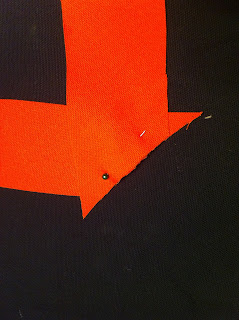My Junior year of college I studied abroad in Ireland, and
the experience has stuck with me ever since. Even now, three years later, I
find myself daydreaming about the little trips we would take around Europe on a
shoestring budget. My Galway Girls know that to start talking would mean pages
upon pages of memories from our six months of traveling, mishaps, culture
shock, and European fashion. I won’t bore everyone! Anywho, my friends and I
would frequently bring only a couple outfits wherever we went because we couldn’t
afford to check our bags. With this, came some ingenious accessorizing. My
favorite: scarves. Every city we went to we could find scarves to dress up a T-shirt
and jeans. AND they were always dirt cheap – particularly in Italy where they
had scarves literally lining the streets in the markets. Back in the USA scarves
were also a hot fashion item, but not quite as cheap as in Europe.
This year I see scarves popping up again and now that I have
a sewing machine, I have been desperate to try to make my own. Infinity scarves
are the newest trend. After looking at a few different tutorials, I came up
with my own! Let me know what you think and if you guys have any suggestions!
Infinity Scarf with
Knot
What you will need:
- 1 ½ yards of fabric (you’ll only need half)
- The Usual Suspects: sewing machine, thread, scissors
Step 1: Cut 1 ½ yard of fabric in half the long way (the
hotdog way, not the hamburger way haha). You will only need one half.
Step 2: Cut the half of fabric you will use in half again
the long way – you’ll have two long strips of fabric.
Step 3: Fold each strip of fabric in half (the long way)
with right sides facing each other. Sew ¼ inch seam down length of each folded
piece of fabric to make two long tubes.
Step 4: Turn tubes inside out.
Step 5: The knot. You can do as many loops as you want. This
fabric was being fussy, so I just stuck to one looping. This is easiest to explain with pictures:
Step 6: Sew associated ends together by putting ends of
tubes from opposite ends together. To start sewing, take two ends and put the right sides of the fabric together. Sew seam around
circle (to close the tube), leaving approximately one inch open. You will have
to stitch this opening closed from the outside but you’ll have a mostly
discrete seam. If this part is confusing, please ask me questions, I’m having
trouble describing this step! Maybe the pictures will help.
Step 7: Once you’ve completed sewing the tubes together, you’re
done! Just fluff and wear J
Model status pshh. Note the bikes on my deck. lol
Sheshy.
Thanks for stopping by! Anybody else making scarves lately?? Let me know! :D


































































